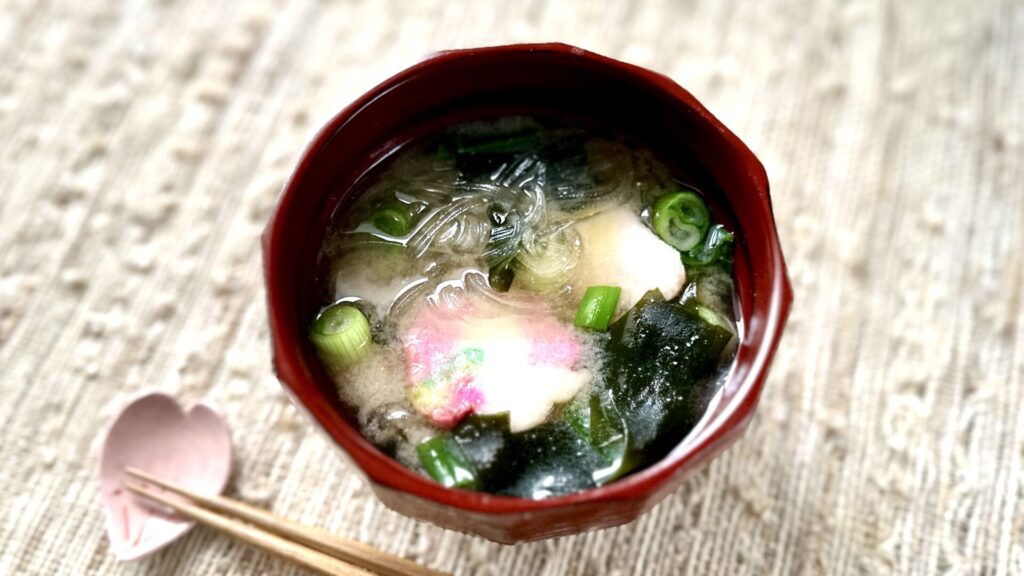Today’s miso soup features Harusame glass noodles. Harusame (春雨) are smooth and glutenous noodles made from potato starch. Harusame is typically sold as hard, dried white sticks, but once cooked, they becomes soft and clear noodles. Harusame literally means “spring rain” in Japanese, which is quite poetic. Harusame is often used in Nabe hot pot dishes or salad in Japanese cuisine, but it’s also great in miso soup. As long as it’s not a large amount added to the soup (as it will absorb liquid), there’s no need to rehydrate it beforehand. We also added Fu (麩), glutenous wheat bread, which tastes like soft croutons in the soup but acts more like a garnish here. Flower-shaped Fu, as used in the recipe, adds a splash of color, perfect for springtime. We hope you give it a try!
Today’s miso soup is made with ground chicken and Daikon radish. Because ground chicken imparts a rich savory chicken flavor, we skipped the Dashi…
Today’s miso soup features a delightful combination of onion, pork belly, and tofu. The natural sweetness from the onion, combined with the savory miso…
Miso Soup (味噌汁) is a traditional Japanese soup, and it’s served with any Japanese meal at any time of the day. Tofu and wakame…
Today’s miso soup is made with carrot and egg. This miso soup is definitely an everyday dish with simple ingredients that are already in…
Today’s miso soup is made with white miso, sliced onion, and grape tomatoes. White miso is sweeter and milder than regular miso, and it…
Today’s miso soup is made with potato dumplings. Dumpling soups, known as Suiton, are found in many regions in Japan, and the dumplings are…
Today’s miso soup is made with frozen seafood mix. Frozen seafood mix are widely available at supermarkets, and they typically include frozen shrimp, squid,…
Today’s miso soup features Satoimo, Japanese taro, and chicken. Soft and fluffy, or sometimes sticky, taro is a satisfyingly filling ingredient for miso soup.…
